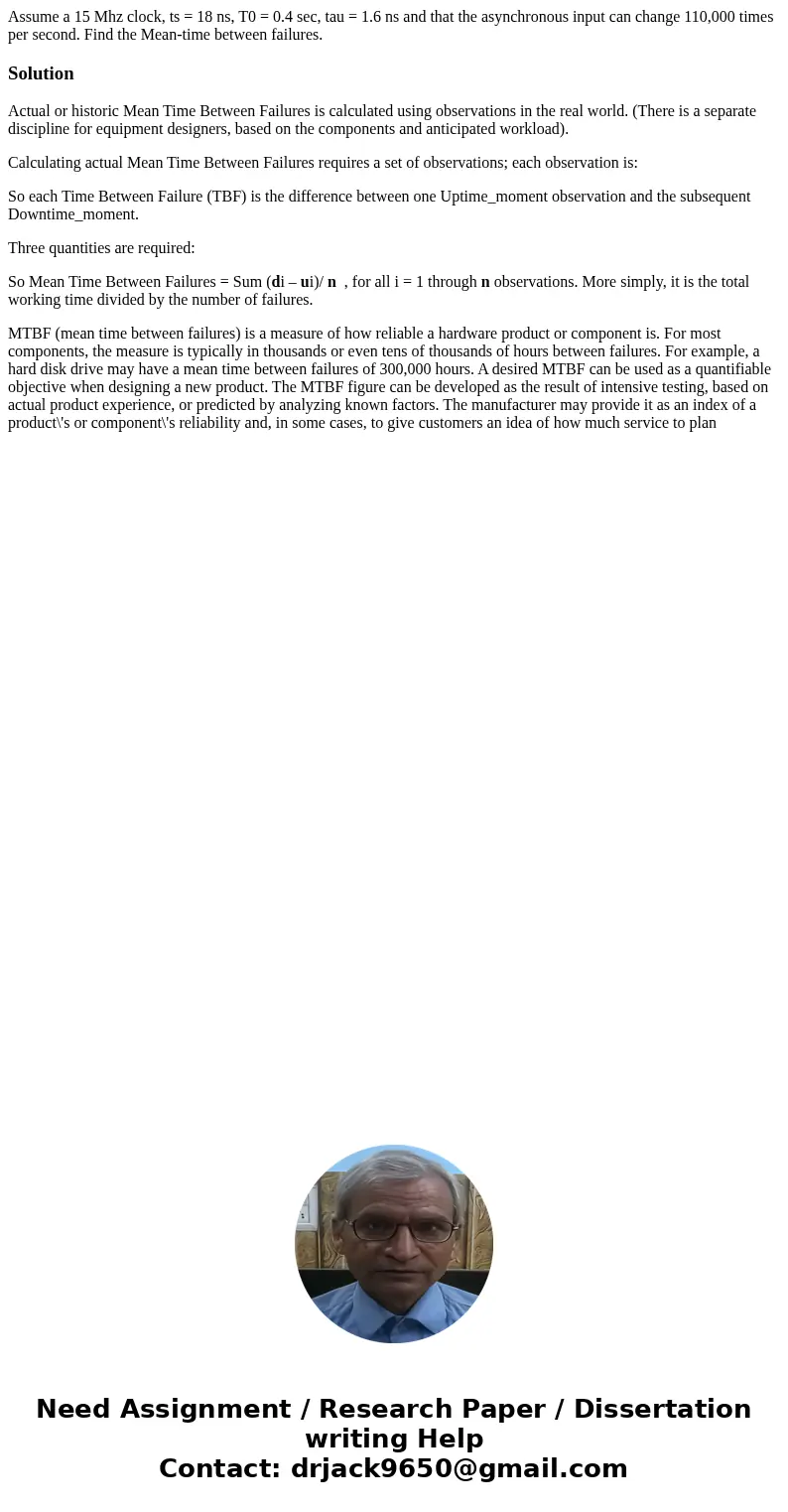Assume a 15 Mhz clock ts 18 ns T0 04 sec tau 16 ns and th
Solution
Actual or historic Mean Time Between Failures is calculated using observations in the real world. (There is a separate discipline for equipment designers, based on the components and anticipated workload).
Calculating actual Mean Time Between Failures requires a set of observations; each observation is:
So each Time Between Failure (TBF) is the difference between one Uptime_moment observation and the subsequent Downtime_moment.
Three quantities are required:
So Mean Time Between Failures = Sum (di – ui)/ n , for all i = 1 through n observations. More simply, it is the total working time divided by the number of failures.
MTBF (mean time between failures) is a measure of how reliable a hardware product or component is. For most components, the measure is typically in thousands or even tens of thousands of hours between failures. For example, a hard disk drive may have a mean time between failures of 300,000 hours. A desired MTBF can be used as a quantifiable objective when designing a new product. The MTBF figure can be developed as the result of intensive testing, based on actual product experience, or predicted by analyzing known factors. The manufacturer may provide it as an index of a product\'s or component\'s reliability and, in some cases, to give customers an idea of how much service to plan

 Homework Sourse
Homework Sourse